As I mentioned in a previous post, Colombia is an amazing place. Simply put, it is gorgeous and the people are some of the friendliest I encountered in South America.
For a nation with its chequered history of civil war and cocaine infamy, you could be forgiven for thinking the Colombians might be a little tired and tetchy, but just about all of the folk I met were genuinely warm and welcoming. Always up for a chat, they were curious about me and my trip and proudly offered suggestions for places to stay and see.
My introduction to Colombia came at the big border crossing of Ipiales, a couple of hundred kays north of the Ecuadorian capital of Quito. I’d stayed in Quito for a few days getting maintenance and washing done, and checking out the city a little. Cities aren’t really my thing, but Quito was okay, if constantly cool, grey and overcast.
On the way out of Quito, I stopped in at the Museo de Sitio Intinan, smack bang on the equator. The museo was less crowded and more orderly than the massive free equatorial monument next door, and while a little cheesy in places, the hour-long tour was worth the US$5 cost.
Along with some exhibits of Indigenous tribal lifestyles and native animals (mainly from the Amazonian region), the tour included a few amusing demonstrations of the weird effects that come with living right on the planet’s waistline. In one, the guide tipped water down a portable sink on either side of the painted equator line on the ground to show how water drains in a different direction in the southern hemisphere compared with in the northern.
This is said to be due to the Coriolis Effect, but I did a bit of wider reading and I’m calling bullshit on it – at least as far as the sink demo was concerned. While the water did appear to drain clockwise on one side of the equator line and counterclockwise on the other, it is as much due to how the water is poured and the design of the sink and drain as the position on the earth. You can forgive them for a little showmanship, because it was interesting nonetheless and helped get the main points across.
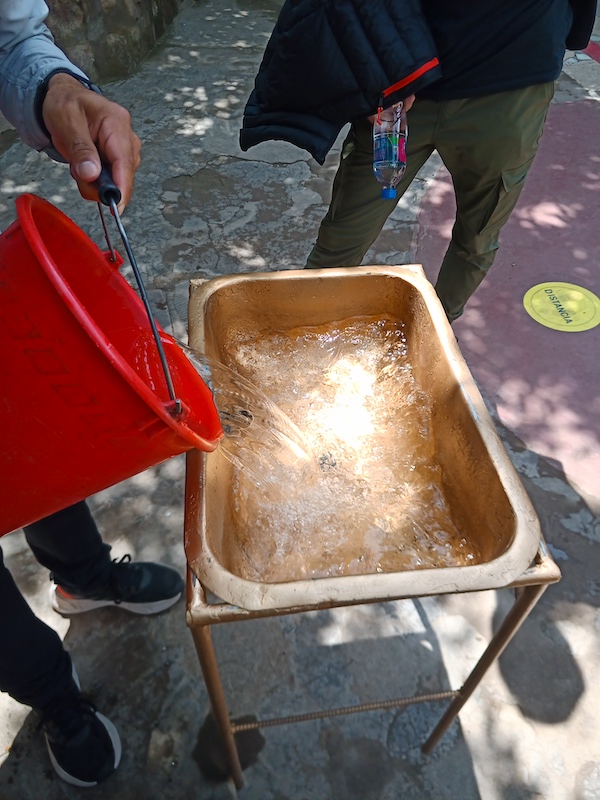
The Coriolis Effect is a real thing, but works on big stuff like weather systems and currents, and its impact is actually weakest at the equator. In practice, the Earth spins faster at the equator than at the poles and the differences in speeds causes deflection. The effect is most significant with high speeds and over long distances. Air currents in the northern hemisphere tend to deflect or bend to the right, while in the southern they bend left. The Coriolis Effect is said to be the reason why hurricanes in the north seem to spin counter-clockwise and cyclones in the southern hemisphere seems to spin clockwise.
At any rate, I did the obligatory photo straddling both side of the equatorial line. It was a milestone – the point at which my journey moved from one hemisphere to another, so was worth marking.
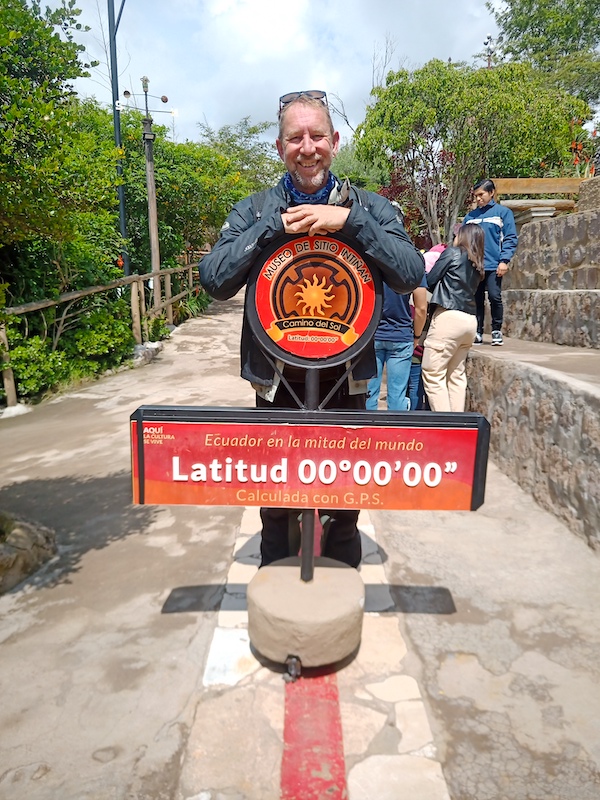
By the time the tour finished and coffee was leisurely consumed, I set out for Ibarra. This was to be an overnight stop so I could hit the border at a relatively early hour. Nicely set among mountains and lakes, Ibarra didn’t look much coming in, but the old part of town – where my hotel was situated – was lovely, with a mix of cobbled streets, whitewashed buildings, old churches and broad plazas. I had a good wander around after fortifying myself with a massive plate of chocolate crepes and ice cream.
The crossing into Colombia was pretty smooth, taking a couple of hours all up. Part of that was 20 minutes hanging outside the Ecuadorian aduana office while they tried to sort a glitch with my temporary import permit (TIP) so it could be closed off properly. Seems the lads down at the La Balza frontier, where I entered Ecuador, missed a couple of things (not suprisingly) but it was sorted without too much pain.
Waiting outside the Colombian aduana for my TIP, I witnessed a heartwarming scene. There were four dogs (strays maybe) hanging around the office, including one mutt clearly in his twilight years. A couple of female officers came out bearing plates of food and set them out for the dogs to get stuck in. When the dogs had eaten their fill, the ladies brought them water and then the contented canines lined up for a pat and a back-scratch. It was obvious this was a daily occurrence, and quite touching for this lifelong dog-lover to see.
Stray dogs are everywhere in South America, but only in Colombia did I see them being treated with real compassion and care. In Peru and Bolivia, people (including children) were often downright cruel, kicking or hitting the poor buggers. Colombia had very few strays compared to the other countries I visited, which says a lot in itself, and there I often saw street dogs being fed and generally treated well. Another reason to like Colombians, I suppose.
After lunch and cashing up with Colombian pesos in Ipiales, I made a short detour to Las Lajas to check out the National Shrine Basilica of Our Lady of Las Lajas. I’m not a religious person, but you don’t need to be to see this fascinating church. It straddles a gorge above a river and the setting alone is worth the visit.
There’s been a shrine here for pilgrims since the mid-1700s after a local lady and her daughter saw an image of the Madonna in the nearby rocks. The current church was finished in 1949 and while small, it is rather beautiful in a churchy kind of way. Read more about the basilica’s origins here.
A visit to the site is a workout. You have to park several hundred metres away in the little village then walk down many stairs and paths to reach the church. Not so bad, but then it’s all uphill on the way back. With my motorcycle gear on, I am not ashamed to admit I stopped a couple of times to rest on the return journey.


With the afternoon getting on, I rode on to Pasto to look for a place to stay. Not the most interesting place, but I didn’t mind because it gave me a jumping off point for the next day’s run to the Trampolin de la Muerte (Trampoline of Death), an infamous 60-odd kilometre dirt track that runs from San Francisco to near Mocoa.
I had read a bit about the Trampolin de la Muerte before the trip, and not all of it was completely true. Sure the road is absolutely spectacular, snaking up and over deeply forested mountains. Sure, it is a bit sketchy being single-lane and cut into the hills with often sheep drops on one side. But I didn’t think it was as dangerous as many reports made out. You do have to watch for buses and trucks, especially around the many blind corners, but the road was fairly quiet on the day I travelled and encounters were thankfully few.
I did have a good laugh a few days later when I got a message from my Mum asking, “What’s this I hear about a Trampoline of Death? I checked it out – terrifying!!!! I am very glad I did not hear about this until after you had done it.”
I gave her a ring and the full story, and she was somewhat mollified. Gotta love her, though.

After a night in Mocoa, San Augustin was the next destination. It is a pretty little town folded into a beautiful landscape and famous for its archaeological sites with pre-Columbian stone figures. I didn’t check out any of these places, preferring instead to get some more bike maintenance done (air filters) and relax in the pleasant surrounds of the Francois House Hotel, just up the hill from the town centre.
Owned by a Frenchman named Francois (bien sûr), the hotel is more of a hostel with a mix of cabins and dorm-style rooms. The cabins were expensive, so I went for a bed in a dorm called the Attic, which was a large room with amazing views over the surrounding hills. No double or triple bunks crammed in here – just a few double beds and plenty of space. If I have to take a dorm, this kind will do nicely.
Francois House also has an excellent restaurant, so I ate very well for a couple of days including some of the best pasta I had anywhere in South America.

From San Augustin, I headed north-west to Popoyan on a great road that passes through the Parque Nacional Natural de Puracé. The route begins on narrow, winding tar through the many hills before climbing gradually to the national park, where it changes to dirt.
The surface isn’t the best and it is pretty slow going for the most part, but it gave me plenty of time to admire the scenery: thick forest with the odd viewpoint over the lush surrounding countryside. I had read a few warnings about the state of the road, and it wasn’t as bad as the reports made out, at least on the trusty WR. There were plenty of crawling trucks, but these are easily passed on a bike, while a bit of rain kept the dust down. The road climbs fairly high and it was cool compared to San Augustin – once I got down the other side of mountains, though, things warmed up again and I was shedding layers.
Popoyan was always going to be just an overnight stop, and I didn’t see much there to merit a longer stay. As I’d arrived in the early afternoon, I went wandering on foot for a couple of hours. The centro, or old part of town, is nice with lots of whitewashed buildings and a plaza that was busy with families and food sellers on a Sunday afternoon.
My hotel was a kilometre or so out of the centre and in an interesting area. Everyone I met was friendly, but there were a few dodgy types hanging around. Having a smoke on the hotel roof late at night, I saw two guys trying to break into a car parked across the street. They were hopelessly drunk and got nowhere, but I was relieved the bike was securely locked in the hotel parking area.
I rolled north towards Cali next day, not intending to stop there but instead aiming for an air museum at the city’s airport. I’d read about it the night before and thought it would be worth checking out. It definitely was.
Run by volunteers, the Museo Aero Fenix is housed in a hangar and has a huge and varied collection. Planes, helicopters, cars, tractors, models, fuel bowsers, transport-related memorabilia – you name, this place had it, including what must be the world’s largest collection of airline cutlery from the days before the threat of terrorism forced the change to plastic utensils.
The cutlery was presented in glass cases that lined the walls of the hangar, each with the origin country of the airline and sometimes a small aircraft model. A few Australian carriers were represented, including Qantas and Ansett.
Even more impressive was a model railway that took up one whole room. Modelled on 1950s USA, the railway featured land- and cityscapes that included New York City and the Pacific Northwest. I’m not a model railway enthusiast, but I didn’t need to be to appreciate the size, details and sheer amount of work that went into its construction – a build that took four volunteers 15 years to complete.
I spent a fascinating two hours or so wandering around, and had the place completely to myself except for a couple of volunteers who were more than happy to point our certain exhibits and ask questions. For an entry fee of about AUD$5, it was great value.
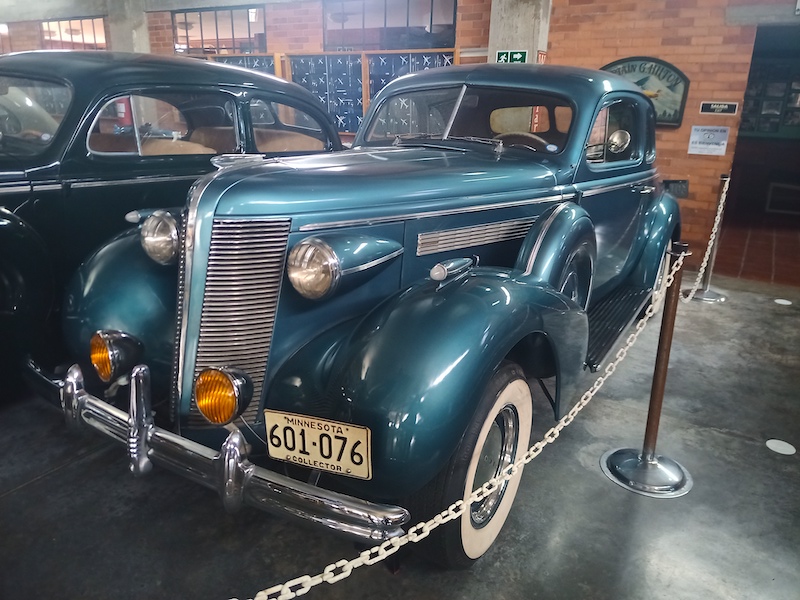
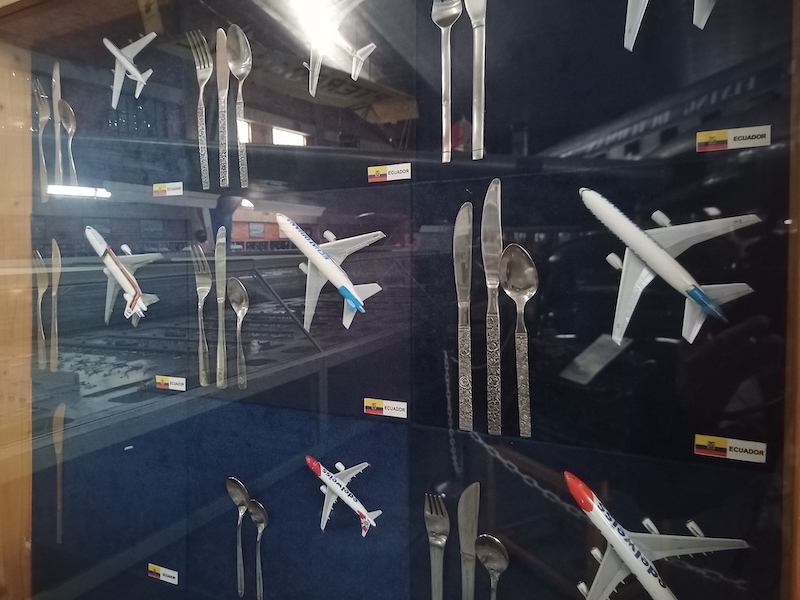

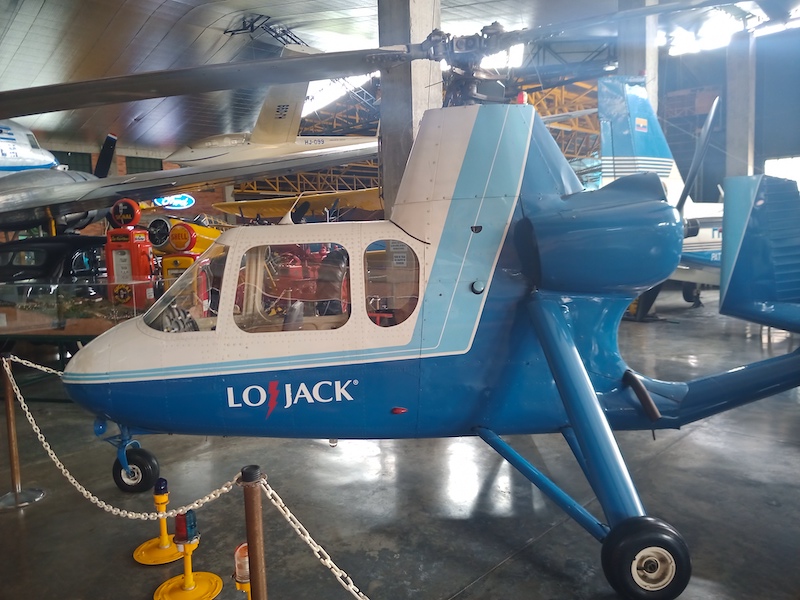
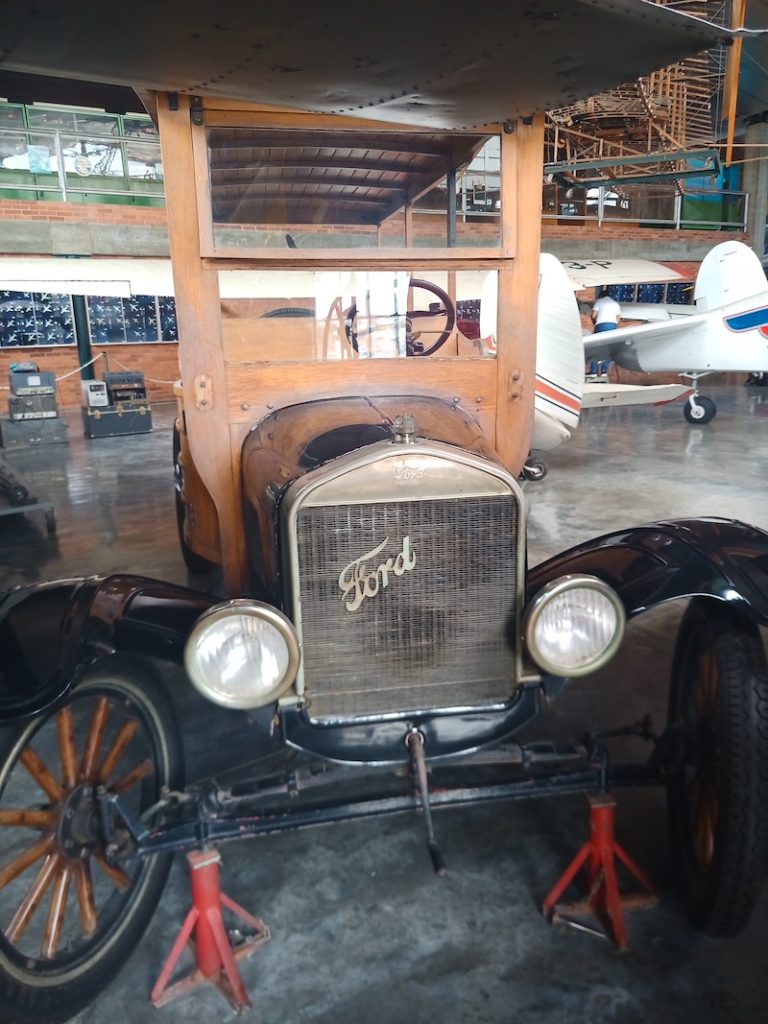

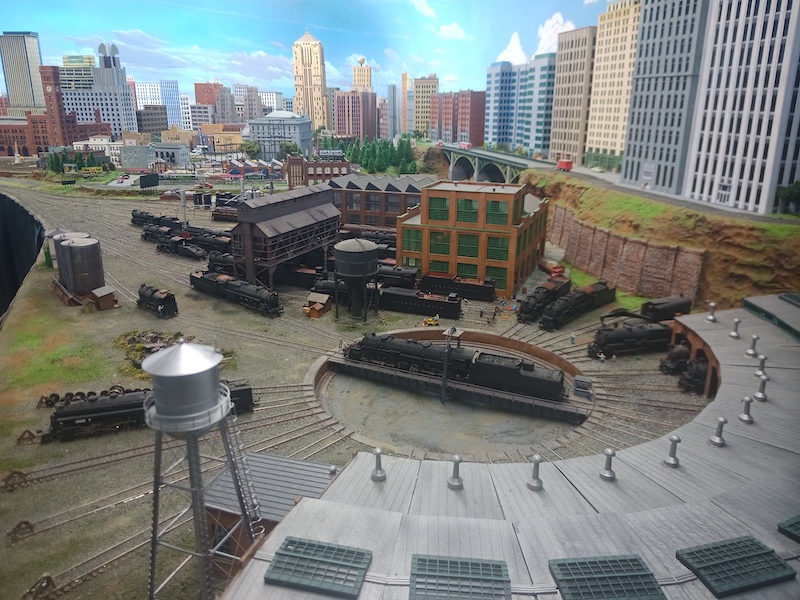
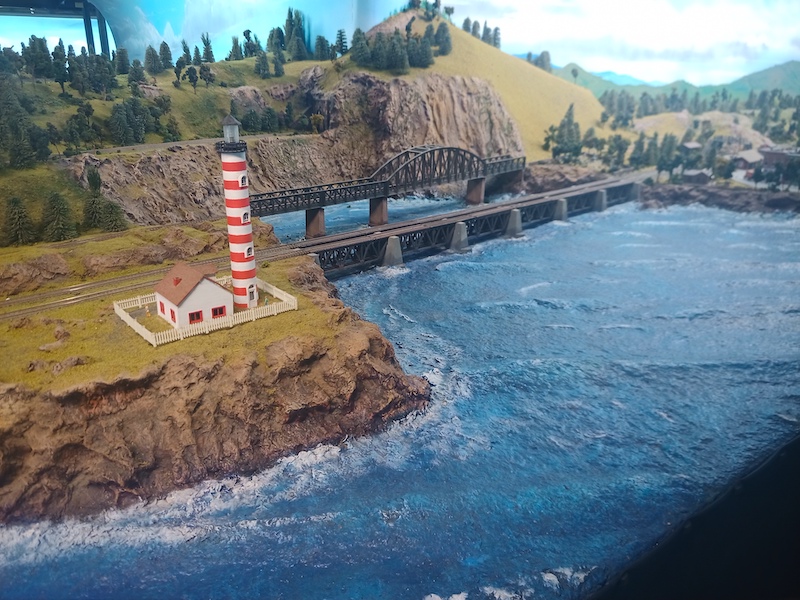
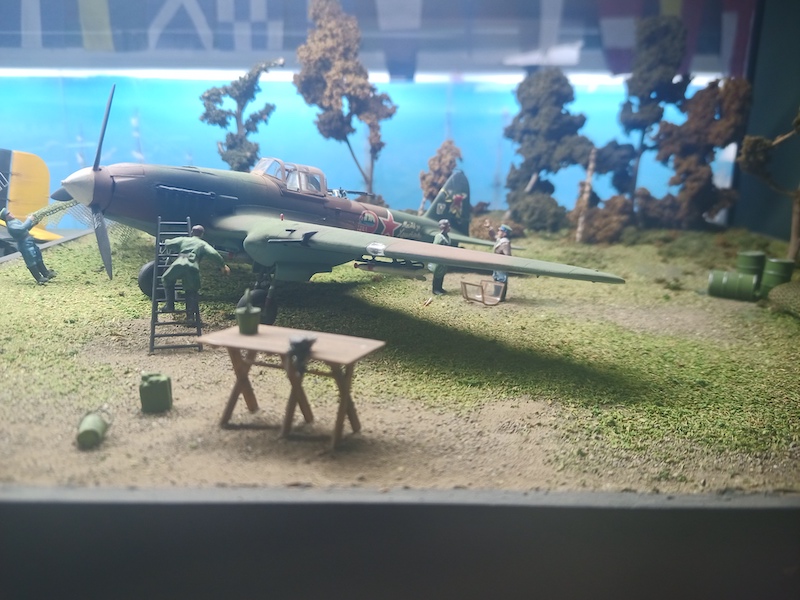

Leaving the museum, I saw dark clouds gathering on the horizon. A storm was brewing, right in my path to the small town of Buga, where I intended to stay the night. As the road swung this way and that, a few times I thought I might just be able to dodge the tempest, but soon it straightened and I knew there would be no escape.
About 15km from Buga, the storm unleashed and it absolutely chucked down. I looked for shelter under an overpass or bus stop, but every one I saw was crammed full of local moto riders doing the same thing. So I carried on to the hotel, and of course, the rain stopped just as I rolled into town.
I ended up spending a couple of nights in Buga, getting laundry done and taking advantage of the next day’s bright sunshine to dry out my wet riding gear. The owners were super nice and fussed around me, making sure I had everything I needed and giving tips on good places to eat.
Salento was the next destination, in one of Colombia’s celebrated coffee regions. It was an easy ride from Buga – just a few cruisey hours – and I rode into the brightly coloured town mid-afternoon. This is my usual modus operandi, as it gives me time to find lodgings (I rarely book ahead), set up camp if needed and have a good poke around to get the lie of the land.
The first hostel I tried looked nice, but there was no parking for the bike so I tried elsewhere. Kilometre Zero was a combination laundry, hiking shop and small hostel. They had a decent room with private bathroom on the top floor for a reasonable price, so I grabbed it for three nights. The bike went into a parking area next door, also for a reasonable price. There was a small kitchen downstairs for guests’ use, with a coffee machine, and the place wasn’t busy so all was well in the world.
Salento is quite a touristy place, popular with locals and extranjeros alike, but it has a nice feel. It’s not terribly big, but has a huge number of artisan souvenir and clothing shops. I don’t know how they all manage to make a living – competition must be white-hot.

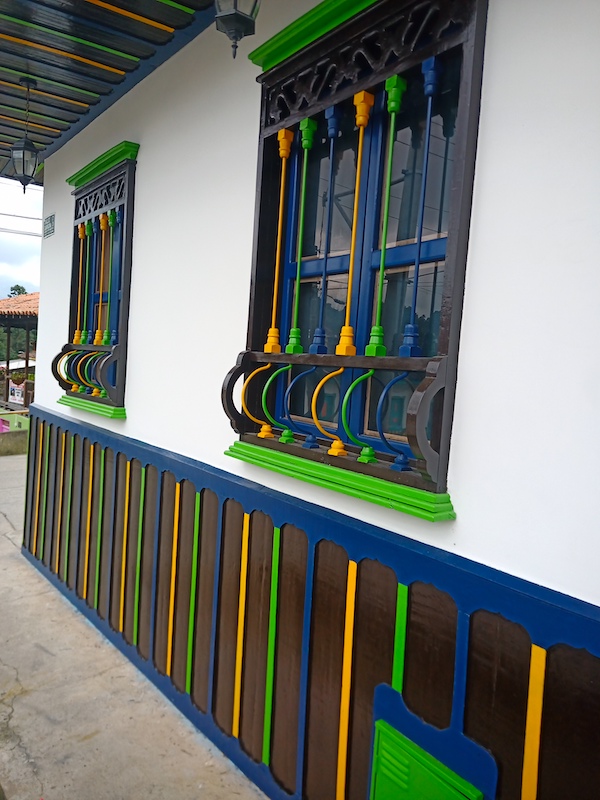

As well as the coffee, Salento is a jump-off point to visit the Valle de Cocora, where Colombia’s famous towering wax palms can be found. It’s the national tree, and somewhat endangered with fewer and fewer places left where they still grow.
With these attractions, Salento is full of signs and touts advertising tours to coffee farms and the Valle. I checked out a few coffee tours, but the prices made me pale. Then I found Plantation House.
On the other side of Salento – a 10-minute walk from my digs – Plantation House is hostel run by a charming and eccentric Englishman named Tim and his Colombian wife. Tim also has a coffee farm and gives tours twice a day. I sent him a message and lined up a tour for 9.30 next morning.
Just like at the air museum, I was the only customer that day so I Tim’s undivided attention for four hours as he waxed lyrical about the entire coffee production process. He really got down to the nitty-gritty on the varieties of coffee plants, their lifecycles, how they grow and produce the beans, how the beans are harvested and treated and how coffee is roasted. Several times he apologised in case I found the talk too technical, but I didn’t mind one bit. I am not a coffee connoisseur by any means, although I love the drink, and I found Tim’s detailed descriptions fascinating.
After an hour, Tim, one of his dogs and I wandered a kilometre down the road to his coffee farm where I learned even more about how coffee is grown. I saw the seedlings being prepared and discovered the farm was coming back to a more ordered state after being left dormant during the COVID pandemic.
Then we wandered back and he roasted some of his own coffee in a big copper pan. He brewed up some that was roasted the day before (you’re supposed to leave it at least 24 hours after roasting) and we enjoyed a few cups of what was a very mellow coffee, lighter in colour due to the medium roast and almost like a tea.

I left Tim’s place with a newfound appreciation for coffee and certainly a lot more knowledge about it than I had before. Even better, he is an interesting and engaging character and our chat covered a whole lot more than just coffee, touching on his 20 years living in Colombia, politics (local and international) and a raft of other topics.
Next day I bought a return ticket to the Valle do Cocora on one of the fleet of old Willys jeeps that muster in the Salento plaza. A couple of bucks each way, it was easier than taking the bike and a pretty fun ride out.
The Valle itself is part gorgeous natural landscape, part theme park. There are restaurants, cafes, souvenir shops and loads of Instagram props in strategic locations. But it is mainly confined to a small area, so I schlepped a way down to valley to where the hiking trails start.
Not so keen on the complete loop – something like six or seven kilometres up some pretty steep terrain – I opted for the shorter 3km stroll into the midst of the palms. Rather than being clumped together, they grown solitary dotted here and there across the lower hillsides, while thicker forest reigns further up.
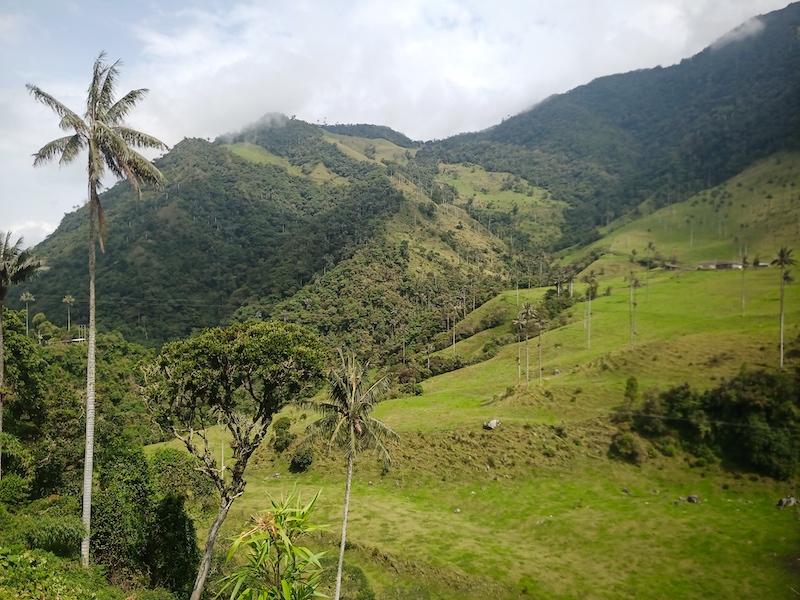
The wax palms are the world’s largest palm, and can grow up to 60m high. They are vulnerable due to deforestation for farming and grazing. True to the name, they do have wax, which was formerly used for making candles and matches.
The palms are majestic, as is the setting in which they grow – if you can ignore the tourist trap tat not far away. I grabbed a coffee and cake at an outdoor cafe on the way back to the Willys meeting place and spent a good while just basking in the beauty of my surroundings, the green forested hills rolling away and the river rumbling at the bottom of the valley beneath me.
The ride back to Salento was a great way to finish a thoroughly enjoyable day out. With no seats available, I rode standing on the bumper bar at the rear of the Willys, breeze in my face and dipping my head occasionally to avoid low-hanging branches.
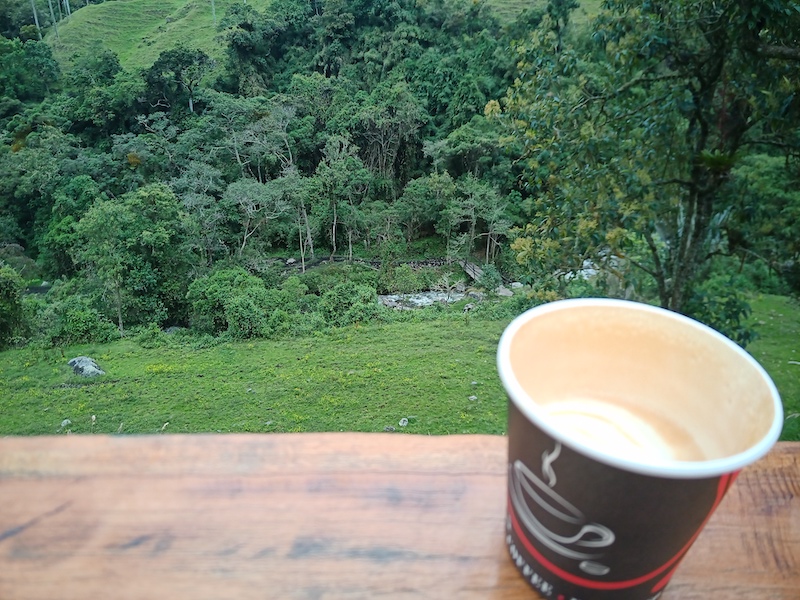
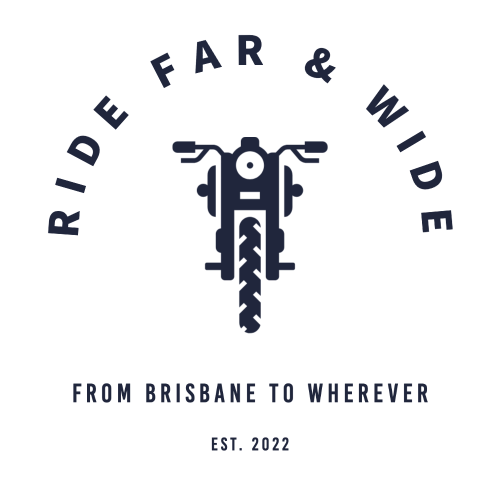
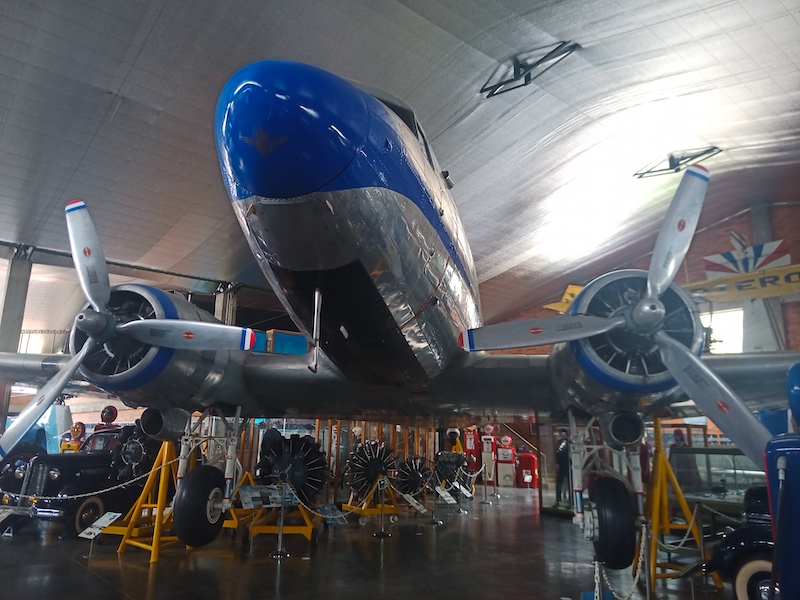
Comments
2 responses to “Trains, planes and coffee beans”
Haven’t heard from you since end of May. Everything OK we are enjoying reading of your trip.
Yep, all good. Currently in Mexico. I kinda lost the motivation to write posts, so the blog has languished. Thanks for your interest.